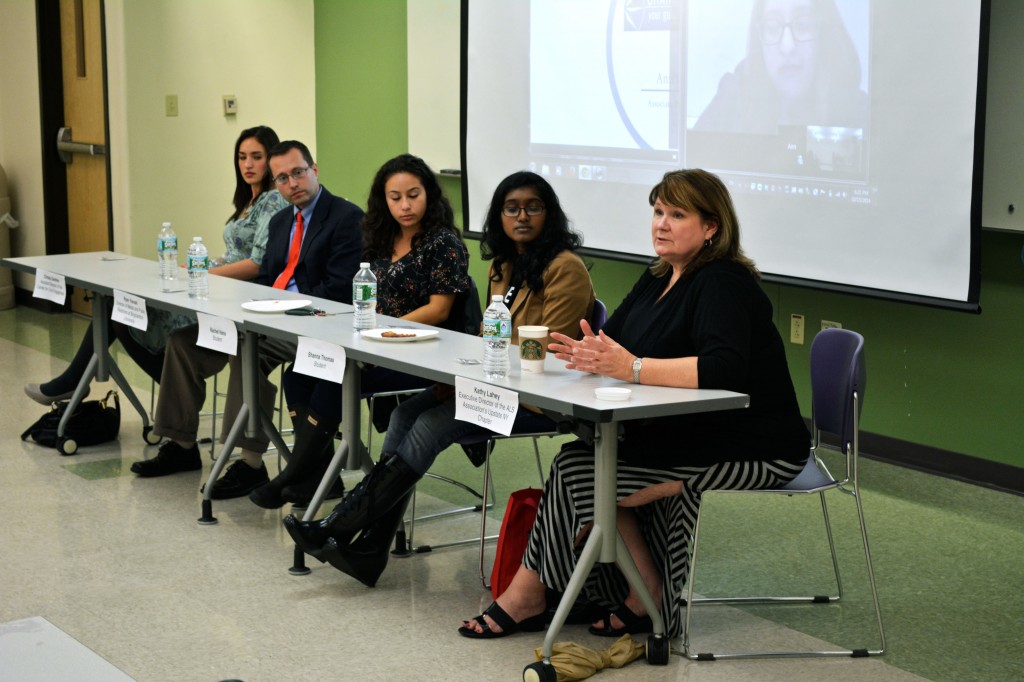
Speakers came to Binghamton University to discuss a 100-million dollar idea: the Ice Bucket Challenge.
A panel composed of both faculty and students met on Wednesday evening to discuss the effect of the viral fundraising campaign on amyotrophic lateral sclerosis (ALS) awareness and research.
ALS, or Lou Gehrig’s disease, is an illness that affects the nerve cells and causes involuntary muscle movement. Later stages of the disease impair cells in the spine and can lead to eventual paralysis and death.
The Ice Bucket Challenge began this past summer when ALS sufferer Pete Frates challenged his friends to help fundraise for the ALS Association. It grew into a viral phenomenon, with the likes of Michael Jordan and Bill Gates dumping buckets of ice water on their heads to raise awareness for the cause.
Prior to this campaign, Kathy Lahey, executive director of the ALS Association’s upstate New York chapter, had been working to figure out how best to spread knowledge about ALS. Lahey said that during the summer, the sudden influx of money was overwhelming.
“We were just thrilled with the awareness,” Lahey said. “We did not start receiving funds until the middle of August. The donations were coming in so quickly, we just couldn’t keep up.”
Ryan Yarosh, Binghamton University’s director of media and public relations, said that the challenge was successful because it incorporated a social aspect and was not time-consuming.
“It’s about creating content that is very shareable,” Yarosh said. “Other people see this content and want to be part of that. It has a real domino effect.”
Christie Zwahlen, assistant director of the Center for Civic Engagement (CCE), warned that the popularity of such campaigns did not mean participants were specifically interested in the cause they were donating to.
“Campaigns like this are excellent in raising awareness about these types of issues,” Zwahlen said. “But I think there is still work to be done in making sure that some of this other information enters the public discourse.”
The popularity was the reason why Rachel Hans, a sophomore majoring in neuroscience, learned about the cause. Working at a camp all summer, Hans said she felt pressure to participate in part because all of her fellow counselors were.
“It was more of a social thing than a thing to raise awareness,” Hans said. “But, at the end of the day, we knew what ALS was. We still learned from it.”
However, she said the motivation should not matter as much as the fundraising itself.
“As long as it gets the job done,” Hans said. “It shouldn’t matter how it’s done, as long as it’s done in the right way. However you decide to get engaged with it is your personal choice.”
Of the more than $100 million going to the national ALS Association, about $47,000 of that is going specifically to the upstate N.Y. chapter. That money will be used for research and patient programs.
“The people living with this disease really want that money to go into research,” Lahey said. “It’s critical that we spend that money through the best efforts.”
Lahey says that chapters, including upstate N.Y., were working on maintaining the influx of awareness and donations, and spending it wisely.
“Will we see [a large national fundraiser] again? Most likely not,” Lahey said. “So we have to be very realistic about how we’re going to spend the money.”


